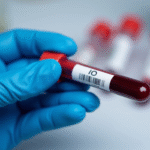Background on Medical Inflation in Mexico
While general inflation has eased the burden on consumers’ wallets and slowed down, medical inflation in Mexico appears to be following a different trajectory. Experts are alerting that medical inflation in Mexico could become one of the highest among Latin American countries by year’s end.
Medical inflation refers to the constant rise in medical, hospital, medication, and diagnostic service prices, typically exceeding overall inflation rates.
Experts’ Projections and Concerns
During a webinar organized by Soy Paciente, Frida Romay from Cero Desabasto projected that Mexico’s medical inflation could reach 14.9% by the end of this year, placing it among the highest in Latin America, where the estimated average is 10.1%, according to Willis Tower Watson data.
Romay highlighted that anti-inflammatory medications have increased by 7.14%, diabetes treatments by 6.77%, and cold remedies (antigripales) by 6.57% compared to 2024.
She expressed concern that rising prices could lead patients to abandon treatments or opt for less effective alternatives, potentially deteriorating their health and increasing the burden on the healthcare system.
Moreover, she pointed out that 52.7% of out-of-pocket healthcare spending in Mexico goes toward medication purchases. According to the Mexican Association of Insurance Institutions (AMIS), Mexico has the highest out-of-pocket healthcare spending among OECD countries, with nearly half of medical expenses paid directly by families.
Challenges in Accessing Public Healthcare
Areli Olmos, Medical IMPACT’s medical director, acknowledged that despite the constitutional right to health in Mexico, accessing it remains complicated due to various factors.
- Healthcare system segmentation based on employment status
- Supply chain failures
- Medication and quality service distribution difficulties
- Insufficient public resources
Olmos mentioned that the World Health Organization (WHO) recommends allocating 6% of a country’s Gross Domestic Product (GDP) to healthcare, but Mexico falls significantly short of this target.
According to data from the Secretaría de Hacienda y Crédito Público (SHCP), healthcare spending represented only 2.7% of the GDP by the end of the previous year.
In the first two months of this year, the government allocated 74.676 billion pesos to healthcare, a 33.6% reduction compared to the same period last year.
Key Questions and Answers
- What is medical inflation? Medical inflation refers to the continuous rise in medical, hospital, medication, and diagnostic service prices, typically surpassing overall inflation rates.
- Why are experts concerned about medical inflation in Mexico? Experts project that Mexico’s medical inflation could reach 14.9% by the end of this year, making it one of the highest in Latin America and potentially causing patients to abandon treatments or opt for less effective alternatives, deteriorating their health and increasing the burden on the healthcare system.
- What percentage of out-of-pocket healthcare spending in Mexico goes toward medication? 52.7% of out-of-pocket healthcare spending in Mexico is allocated to medication purchases.
- What is the WHO’s recommendation for healthcare spending as a percentage of GDP? The WHO recommends allocating 6% of a country’s Gross Domestic Product (GDP) to healthcare.
- How does Mexico’s healthcare spending compare to the WHO recommendation? Mexico allocates only 2.7% of its GDP to healthcare, falling significantly short of the WHO’s recommendation.






